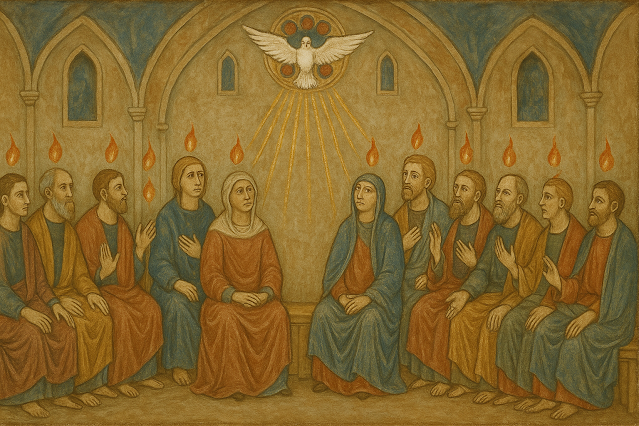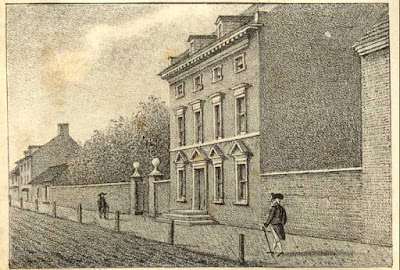A permanent wave, commonly called a perm, is the treatment of hair by heat and or chemicals to produce curls.
The first person to produce a method for curling hair was French hairdresser Marcel Grateau, who in 1872, devised a pair of specially manufactured tongs, that when heated on a gas flame and applied to the hair, produced a two-dimensional wave, similar to a curling iron. The correct temperature was achieved by testing the tongs on a newspaper – if the paper browned slightly it was deemed about right.
The curling irons revolutionized hair styling and made the marcel wave (and variations of the wave) popular for over 50 years.
A patent entitled "Hair-Waving Iron", for an electric implement for performing the technique, under the name François Marcel, was published in 1918.
The glamorous waves produced by this archaic version of the curling iron were a huge hit in the 1920s among flappers wanting to spice up their short bobs with the “marcel wave.” One famous wearer was Josephine Baker and many Hollywood stars adopted the style.
The doo-wop group the Marcels were named after the hairstyle.
The first chemical treatment for curling hair that was suitable for use on people was invented in the year 1905 by the German hairdresser Karl Nessler (1872-1951). He used a mixture of cow urine and water.
Nessler had been working on the idea for a decade, combining Grateau’s method, which used heat to curl hair, along with an older method, which used caustic chemicals to curl wigs, the recipes being too harsh to use on human skin.
By the end of the 19th century, Nessler had moved to Paris, where adapting to the French-speaking environment, he called himself Nestle and began testing his first perm on his wife, Katharina Laible. The first two attempts resulted in completely burning her hair off and some scalp burns.
Nessler moved to London in 1901 where he began his own salon and continued tinkering with new hair-curling methods experimenting on his long-suffering wife.
The first public demonstration took place on October 8, 1905 when Nessler displayed his ‘permanent wave’ machine at 245 Oxford Street, London, in front of prominent hairdressers of the time.
By 1909, Nessler's electric permanent wave machine was being used in London on the long hair of the time.
Early permanent wave machines used electricity and various liquids to perm hair and were difficult to use. The bulky machines required the client to sit for around six hours with 12 brass curlers in their hair. to complete the process of achieving the popular look of waved hair.. However, it saved women countless hours with the curling iron and forever united fashion with 20th-century technology.
Chicago cosmetology school graduate Marjorie Stewart Joyner invented a new version of the permanent wave machine in 1926, becoming the first black woman to earn a U.S. patent two years later.
Distressed over how damaged the kinky hair of black women would often turn out after a visit to the hairdresser, Joyner experimented with heated pot roast rods, inspired by a pot roast. She eventually developed a machine that could curl or straighten a woman’s hair for multiple days at a time by “cooking” it beneath a hair dryer hood connected to 16 of the pot roast pins by an electrical cord that allowed a hairdo to stay set for days.
Sources Comptons Encyclopedia, Beautysupply.about.com, Cynos.ca, Historychannel.com.au/
The first person to produce a method for curling hair was French hairdresser Marcel Grateau, who in 1872, devised a pair of specially manufactured tongs, that when heated on a gas flame and applied to the hair, produced a two-dimensional wave, similar to a curling iron. The correct temperature was achieved by testing the tongs on a newspaper – if the paper browned slightly it was deemed about right.
The curling irons revolutionized hair styling and made the marcel wave (and variations of the wave) popular for over 50 years.
A patent entitled "Hair-Waving Iron", for an electric implement for performing the technique, under the name François Marcel, was published in 1918.
The glamorous waves produced by this archaic version of the curling iron were a huge hit in the 1920s among flappers wanting to spice up their short bobs with the “marcel wave.” One famous wearer was Josephine Baker and many Hollywood stars adopted the style.
The doo-wop group the Marcels were named after the hairstyle.
 |
| Edna Fearon (Liverpool, UK) models the Marcel Wave, circa 1930.Wikipedia Commons |
The first chemical treatment for curling hair that was suitable for use on people was invented in the year 1905 by the German hairdresser Karl Nessler (1872-1951). He used a mixture of cow urine and water.
Nessler had been working on the idea for a decade, combining Grateau’s method, which used heat to curl hair, along with an older method, which used caustic chemicals to curl wigs, the recipes being too harsh to use on human skin.
By the end of the 19th century, Nessler had moved to Paris, where adapting to the French-speaking environment, he called himself Nestle and began testing his first perm on his wife, Katharina Laible. The first two attempts resulted in completely burning her hair off and some scalp burns.
Nessler moved to London in 1901 where he began his own salon and continued tinkering with new hair-curling methods experimenting on his long-suffering wife.
The first public demonstration took place on October 8, 1905 when Nessler displayed his ‘permanent wave’ machine at 245 Oxford Street, London, in front of prominent hairdressers of the time.
By 1909, Nessler's electric permanent wave machine was being used in London on the long hair of the time.
 |
| Early 20th century advertisement for Nessler's permanent wave machine |
Early permanent wave machines used electricity and various liquids to perm hair and were difficult to use. The bulky machines required the client to sit for around six hours with 12 brass curlers in their hair. to complete the process of achieving the popular look of waved hair.. However, it saved women countless hours with the curling iron and forever united fashion with 20th-century technology.
Chicago cosmetology school graduate Marjorie Stewart Joyner invented a new version of the permanent wave machine in 1926, becoming the first black woman to earn a U.S. patent two years later.
 |
| Permanent wave machine invented in 1928 by Marjorie Joyner |
Distressed over how damaged the kinky hair of black women would often turn out after a visit to the hairdresser, Joyner experimented with heated pot roast rods, inspired by a pot roast. She eventually developed a machine that could curl or straighten a woman’s hair for multiple days at a time by “cooking” it beneath a hair dryer hood connected to 16 of the pot roast pins by an electrical cord that allowed a hairdo to stay set for days.
Sources Comptons Encyclopedia, Beautysupply.about.com, Cynos.ca, Historychannel.com.au/

































